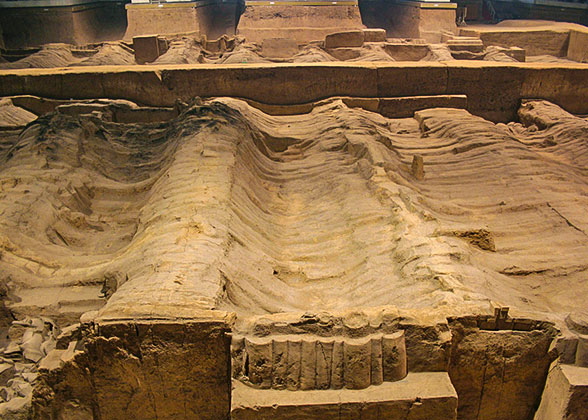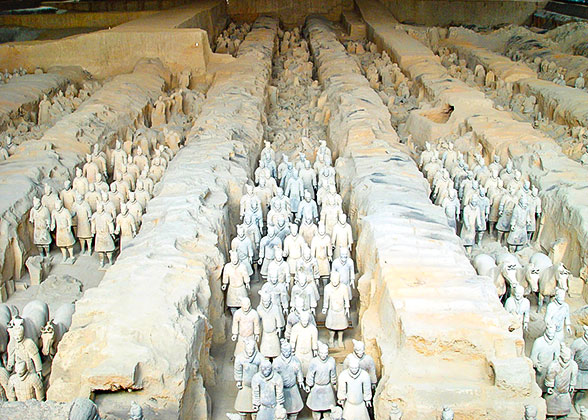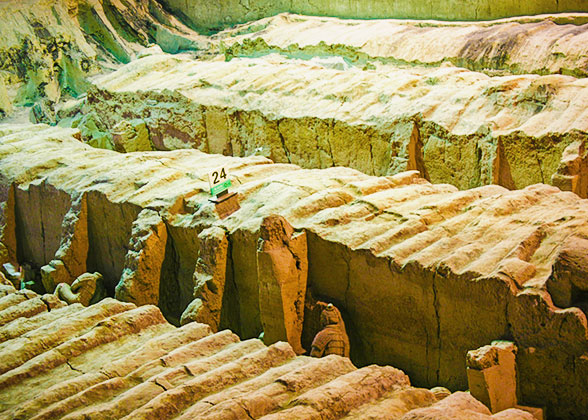Why are there partition walls in the pit of Terracotta Army?
When visiting the Terracotta Army, people will notice that there are many long partition walls made of yellow soil in the pit. These partition walls were built 2,200 years ago, at the same time as the Terracotta Army. Looking bulky and not harmonious with the delicately made terracotta warriors, people may wonder why they were built and can archaeologists remove them. Below are the answers.
Why were partition walls built in the pit of the Terracotta Army?
1. Bear Weight
|
|
2. Distinguish Different Units of the Terracotta Soldiers
Apart from bearing weight, the partition walls were also constructed to separate the different units of the Terracotta Army. For example, the cavalry and the infantry were divided, and soldiers and officers were also divided. Such a well-organized arrangement conveyed the idea that Emperor Qin Shi Huang was able to command an invincible army even in his afterlife.
Why can't these partition walls be removed now?
 |
| Partition walls are highers than the terracotta soldiers. |
First, the removal of partition walls will inevitably cause damage to the nearby Terracotta Warriors. After the walls are teared down, the expanded space with no barrier inside will make the Terracotta Warriors subject to more damage from humidity. Thus, because of potential secondary damage, it is a wise move to maintain the partition walls.
Secondly, when excavating ancient cultural relics, Chinese archaeologists always stick to a rule called “Protective Excavation”. It means that people should not randomly unearth cultural relics unless they face the danger of disappearence. The same goes for the partition walls.
Last but not least, built 2,200 years ago, the partition walls are historical relics themselves. People shouldn’t arbitrarily change a historical site, in order to suit modern aesthetics. The emphasis should be laid on respecting the ancient people’s wills and retaining the relics’ original style. Therefore, the partition walls in the Terracotta Army should not be removed.
- Last updated on Aug. 14, 2024 by Catherine He -

